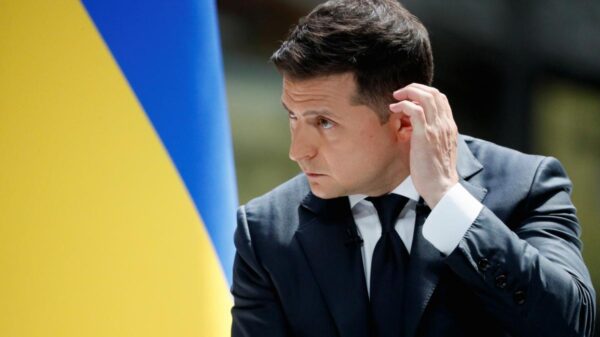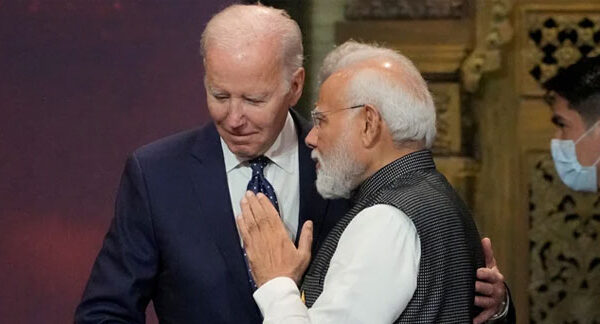If there is a war with China, will this plan of America work?
The commitment of the US military to the Pacific Ocean region has been underlined once again in the meeting between the US and Japanese leaders.
The US Marine Corps is the most respected part of the US military. But these days a bitter debate is going on in this corps.
The retired senior commander of the Marine Corps is firing one word after another at the current generals. He has a strong objection to the attempt of changes in the army of America’s most prestigious warriors.
Retired warriors have objection to the plan named Force Design 2030. The purpose of this plan is to prepare this special part of the US Army for any possible war against China in the future.
Ever since the talk of this plan started, retired generals have started criticizing it openly in the media in an unexpected way. Retired officers have also been avoiding talking to the press in army matters.
But this time retired officers are openly flouting this new plan in seminars. They are calling it a disaster for the future of the Marine Corps.
Jim Webb, a former US Navy secretary, was a Marine officer in the Vietnam War. In the year 2015, he contested for the presidential nomination within the Democratic Party.
In the American newspaper The Wall Street, Jim Webb described it as a ‘flawed plan lacking testing’.
In a cautionary tone, he raised serious questions about the long-term risks of “dramatic reductions in Marine Corps composition, weapon systems and troop levels.”
Why is the retired general angry?
This plan was launched in the year 2020 by Marine Corps Commander David Burger. The purpose of the plan is to prepare US Marines in the event of a possible war with China in the Indo-Pacific region. These soldiers have so far taken part only in counter insurgency wars like Iraq and Afghanistan.
In this plan, Marine soldiers will be taught to fight as separate units on the islands of the sea. These units will be small but due to new weapons, their firepower will be very high.
Landing a large number of troops on the seashore or deployment in Iraq on the lines of the Second World War, will become a thing of the past for the US Army.
The most controversial part of the plan is to cut the number of foot soldiers and eliminate the use of tanks altogether.
The Marine Corps of America is a part of the US Navy, but after World War II it emerged as a separate service. The soldiers of this corps have played important roles in the campaigns of Iraq and Afghanistan.
Much of the reputation of the Marine Corps in the public eye is tied to World War II. Hollywood films have also made many films on this service of the US Army. Recently, Steven Spielberg and Tom Hanks have also made a series of ‘The Pacific Name’.
But in the new plan, Marines will not fight like Hollywood movies at all.
Critics say that the biggest impact of the coming changes in the Marine Corps will be on the role of these soldiers to be deployed wherever they are needed. Because now the main focus of Marine Corps will be China and Indo-Pacific.
So what is there in this plan after all?
infantry cut
- some battalions will be abolished
- About 75 percent of artillery guns will be replaced with long-range rocket systems
- Many helicopter squadrons will be closed
- Marine Corps will no longer have any tanks
- US $ 15.8 billion will be spent on new weapons
Where will its money come from?
This money will be funded only by the reduction of US $ 18.2 billion in the expenses of the Marine Corps.
In addition to new rocket artillery systems, new anti-shipping missiles will also be deployed, which can be fired from land or drones.
The effort is to prepare the US Army for such a war which can be like the war in Ukraine.
The focus of Force Design 2030 is to downsize large units and teach them to fight on small islands. The plan is that these smaller units take part in the war over a larger area within a shorter period of time.
Mike O’Hanlon, director of foreign policy and military affairs at the Brookings Institute in Washington, rejects the argument that a focus on China would interfere with the Marine Corps’ operations in the rest of the world.
They say that wherever the Marines are needed, they will go and this will not be affected by the new policy.
Many experts have said that change is imperative if the Marines are to prepare for the challenges of future warfare.
Dr. Frank Hoffman, a research fellow at the US National Defense University and a former Marine officer, says, “Critics are looking back at a glorious past. They are not clearly seeing the strategic picture in terms of China and technology.”
Most of the criticism is being done on the complete removal of tanks from the Marine Corps.
But Dr. Hoffman says that this decision is absolutely correct. They say that even now the Marine Corps has enough armored vehicles, only heavy tanks are being removed.
He says, “This is necessary so that we can attack within any area. That too with high speed and better fire power. Till now Marines used to use air strikes for this work. But now Marines’ Apart from conventional artillery, it will have a stock of missiles which will increase their range along with being lethal.
Lessons from Ukraine?
Many experts are saying that all these steps are being taken because of the lessons learned from the Ukraine war.
The war between Russia and Ukraine has underlined the importance of drones and rocket artillery. Along with this, the accurate target of these two weapons and the ability to hit inside has also been highlighted.
But there is a big difference between the battlefield of Ukraine and the potential war in the Pacific Ocean. A possible war with China would take place on many small islands spread over thousands of miles in the sea instead of dense forests and grasslands.
The Force Design 2030 program is constantly improving. Many changes have been made in this scheme and it is possible that there will be changes in future also.
The plan is moving forward in one direction but there are still some unresolved problems. Among these, the most important is the logistical challenge of fighting on islands spread over a vast ocean.
The ability to fight simultaneously on water and land will be at the center of this future war. Nick Child, Senior Fellow at the Naval Forces and Maritime Security in London, explains that new types of ships will be required for warfare on land and water.
Nick Childs says, “Relying only on conventional ships could prove costly as they would be facing sophisticated weapons. Such a war would require many small seaplanes that could be deployed quickly and easy to reach anywhere.”
Small ships can be built quickly in many of America’s own large shipyards. But probably not at the speed the Navy would need.
The US Navy will also need a large number of new warships. It is not clear from where the funds will come for these.
Jonathan Marcus is Honorary Professor at the University of Exeter, UK. He has also been a senior BBC correspondent for a long time.








